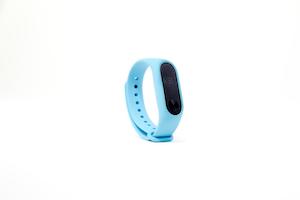ContextMenu
ContextMenu displays an overlay menu on right click of its target.
Import #
import { ContextMenuModule } from 'primeng/contextmenu';
Basic #
ContextMenu can be attached to a particular element whose local template variable name is defined using the target property.

<img #img src="https://primefaces.org/cdn/primeng/images/demo/nature/nature2.jpg" alt="Logo" aria-haspopup="true" class="w-full md:w-[30rem] rounded shadow-lg" />
<p-contextmenu [target]="img" [model]="items" />
Document #
Setting global property to true attaches the context menu to the document.
Right-Click anywhere on this page to view the global ContextMenu.
<p-contextmenu [model]="items" [global]="true" />
Template #
ContextMenu offers item customization with the item template that receives the menuitem instance from the model as a parameter.
 Bamboo Watch$65Accessories
Bamboo Watch$65Accessories Black Watch$72Accessories
Black Watch$72Accessories Blue Band$79Fitness
Blue Band$79Fitness Blue T-Shirt$29Clothing
Blue T-Shirt$29Clothing Bracelet$15Accessories
Bracelet$15Accessories
<ul class="m-0 p-0 list-none border border-surface-200 dark:border-surface-700 rounded p-4 flex flex-col gap-2 w-full md:w-[30rem]">
<li
*ngFor="let product of data"
class="p-2 hover:bg-surface-100 dark:hover:bg-surface-800 rounded border border-transparent transition-all transition-duration-200"
[ngClass]="{ 'border-primary': selectedId === product.id }"
(contextmenu)="onContextMenu($event)"
>
<div class="flex flex-wrap p-2 items-center gap-4">
<img class="w-16 shrink-0 rounded" src="https://primefaces.org/cdn/primeng/images/demo/product/{{ product.image }}" [alt]="product.name" />
<div class="flex-1 flex flex-col gap-1">
<span class="font-bold">{{ product.name }}</span>
<div class="flex items-center gap-2">
<i class="pi pi-tag text-sm"></i>
<span>{{ product.category }}</span>
</div>
</div>
<span class="font-bold ml-8">${{ product.price }}</span>
</div>
</li>
</ul>
<p-contextmenu #cm [model]="items" (onHide)="onHide()">
<ng-template #item let-item>
<a pRipple class="flex items-center px-4 py-3 cursor-pointer">
<span [class]="item.icon"></span>
<span class="ms-2">{{ item.label }}</span>
<p-badge *ngIf="item.badge" class="ms-auto" [value]="item.badge" />
<span *ngIf="item.shortcut" class="ms-auto border border-surface rounded bg-emphasis text-muted-color text-xs p-1">{{ item.shortcut }}</span>
<i *ngIf="item.items" class="pi pi-angle-right ms-auto rotate-90 lg:rotate-0"></i>
</a>
</ng-template>
</p-contextmenu>
Command #
The function to invoke when an item is clicked is defined using the command property.
 Amy Elsner
Amy ElsnerAdmin  Anna Fali
Anna FaliMember  Asiya Javayant
Asiya JavayantMember  Bernardo Dominic
Bernardo DominicGuest  Elwin Sharvill
Elwin SharvillMember
<p-toast />
<ul class="m-0 list-none border border-surface rounded p-4 flex flex-col gap-2 w-full sm:w-96">
<li
*ngFor="let user of users"
class="p-2 hover:bg-emphasis rounded border border-transparent transition-all duration-200 flex items-center justify-content-between"
[ngClass]="{ 'border-primary': selectedId === user.id }"
(contextmenu)="onContextMenu($event, user)"
>
<div class="flex flex-1 items-center gap-2">
<img class="w-8 h-8" [alt]="user.name" [src]="'https://primefaces.org/cdn/primeng/images/demo/avatar/' + user.image" />
<span class="font-bold">{{ user.name }}</span>
</div>
<p-tag [value]="user.role" [severity]="getBadge(user)" />
</li>
</ul>
<p-contextmenu #cm [model]="items" (onHide)="onHide()" />
Router #
Menu items support navigation via routerLink, programmatic routing using commands, or external URLs.
<span #span class="inline-flex items-center justify-center border-2 border-primary rounded w-16 h-16" aria-haspopup="true">
<svg width="31" height="33" viewBox="0 0 31 33" fill="none" xmlns="http://www.w3.org/2000/svg">
<path d="..." fill="var(--p-primary-color)" />
</svg>
</span>
<p-contextmenu [target]="span" [model]="items" />
Table #
Table has built-in support for ContextMenu, see the ContextMenu demo for an example.
Accessibility #
Screen Reader
ContextMenu component uses the menubar role with aria-orientation set to "vertical" and the value to describe the menu can either be provided with aria-labelledby or aria-label props. Each list item has a presentation role whereas anchor elements have a menuitem role with aria-label referring to the label of the item and aria-disabled defined if the item is disabled. A submenu within a ContextMenu uses the menu role with an aria-labelledby defined as the id of the submenu root menuitem label. In addition, menuitems that open a submenu have aria-haspopup, aria-expanded and aria-controls to define the relation between the item and the submenu.
Keyboard Support
| Key | Function |
|---|---|
| tab | When focus is in the menu, closes the context menu and moves focus to the next focusable element in the page sequence. |
| enter | If menuitem has a submenu, toggles the visibility of the submenu otherwise activates the menuitem and closes all open overlays. |
| space | If menuitem has a submenu, toggles the visibility of the submenu otherwise activates the menuitem and closes all open overlays. |
| escape | Closes the context menu. |
| down arrow | If focus is not inside the menu and menu is open, add focus to the first item. If an item is already focused, moves focus to the next menuitem within the submenu. |
| up arrow | If focus is not inside the menu and menu is open, add focus to the last item. If an item is already focused, moves focus to the next menuitem within the submenu. |
| right arrow | Opens a submenu if there is one available and moves focus to the first item. |
| left arrow | Closes a submenu and moves focus to the root item of the closed submenu. |
| home | Moves focus to the first menuitem within the submenu. |
| end | Moves focus to the last menuitem within the submenu. |

